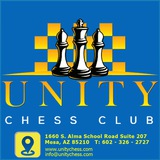📘 10.g4!
Although White's king is still in the center, he initiates a flank attack on the kingside.
10...h6
(10...N×g4? 11.Qe4+/-)
11.Rg1 b5 12.Be2 Bb7 13.g5 +/= White has an active play
Although White's king is still in the center, he initiates a flank attack on the kingside.
10...h6
(10...N×g4? 11.Qe4+/-)
11.Rg1 b5 12.Be2 Bb7 13.g5 +/= White has an active play
📘 28...R×f1!+
Wesley So displays his strong calculation skills.
29.K×f1 Qh1+ 30.Ke2 Qh5+ 31.Q×h5 N×d4+ 32.e×d4 g×h5 33.b4 Rb8 -/+
Wesley So displays his strong calculation skills.
29.K×f1 Qh1+ 30.Ke2 Qh5+ 31.Q×h5 N×d4+ 32.e×d4 g×h5 33.b4 Rb8 -/+
📘 64.Ke1?
Adhiban has missed his only chance to obtain counterplay.
(64.f6+ g6 65.Ke1 White always has a chance to attack the f7. it is still difficult for Black to make progress.)
64...Qf2+ 65.Kd1 f6 -+
Adhiban has missed his only chance to obtain counterplay.
(64.f6+ g6 65.Ke1 White always has a chance to attack the f7. it is still difficult for Black to make progress.)
64...Qf2+ 65.Kd1 f6 -+
📘 10.Qg4!
A multi-purpose move:
1- To prevent the development of the black king's bishop.
2- With the idea of Qg3, offering to exchange queens.
3- After the exchange on g3, the h-file will be opened for white. If black refuses to trade, he will lose a tempo. it means he shifts his queen to a less useful square.
A multi-purpose move:
1- To prevent the development of the black king's bishop.
2- With the idea of Qg3, offering to exchange queens.
3- After the exchange on g3, the h-file will be opened for white. If black refuses to trade, he will lose a tempo. it means he shifts his queen to a less useful square.
📕 1.Bxd5!
Black's pieces have no proper coordination at the moment and White exploits it.
1.Rfe1 or 1.h4 allow Black to obtain counterplay: 1...Nxc3 2.bxc3 Qb2.
Black's pieces have no proper coordination at the moment and White exploits it.
1.Rfe1 or 1.h4 allow Black to obtain counterplay: 1...Nxc3 2.bxc3 Qb2.
📕 1.Be4!
Black has only to play Bc8-d7-c6 to get into good position. The queen is misplaced on b6, where it doesn't cooperate with minor pieces, and the dark squares on the kingside are weakened. White uses his advantage in development to seize the initiative. White wants to exchange Black's pride - his knight at d5, and then the weakness of the dark squares around the king will be more perceptible.
Black has only to play Bc8-d7-c6 to get into good position. The queen is misplaced on b6, where it doesn't cooperate with minor pieces, and the dark squares on the kingside are weakened. White uses his advantage in development to seize the initiative. White wants to exchange Black's pride - his knight at d5, and then the weakness of the dark squares around the king will be more perceptible.
📕Unity Chess Multiple Choice 245
A: Bg7 – 7
👍👍👍👍👍👍👍 58%
C: e4 – 4
👍👍👍👍 33%
B: Re8 – 1
👍 8%
👥 12 people voted so far.
A: Bg7 – 7
👍👍👍👍👍👍👍 58%
C: e4 – 4
👍👍👍👍 33%
B: Re8 – 1
👍 8%
👥 12 people voted so far.
📕Unity Chess Multiple Choice 246
A: Nb4 – 15
👍👍👍👍👍👍👍 100%
B: g6
▫️ 0%
C: Qe7
▫️ 0%
👥 15 people voted so far.
A: Nb4 – 15
👍👍👍👍👍👍👍 100%
B: g6
▫️ 0%
C: Qe7
▫️ 0%
👥 15 people voted so far.
Finalists in the great tournament at St Petersburg, May 1914 - seated, left to right: Lasker, Alekhine, Capablanca, Marshall & Tarrasch.
@UnityChess
@UnityChess
